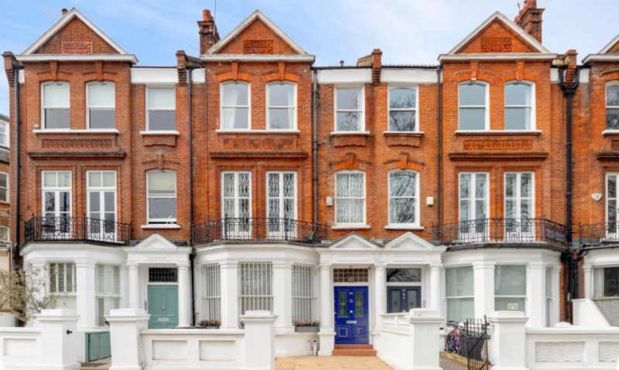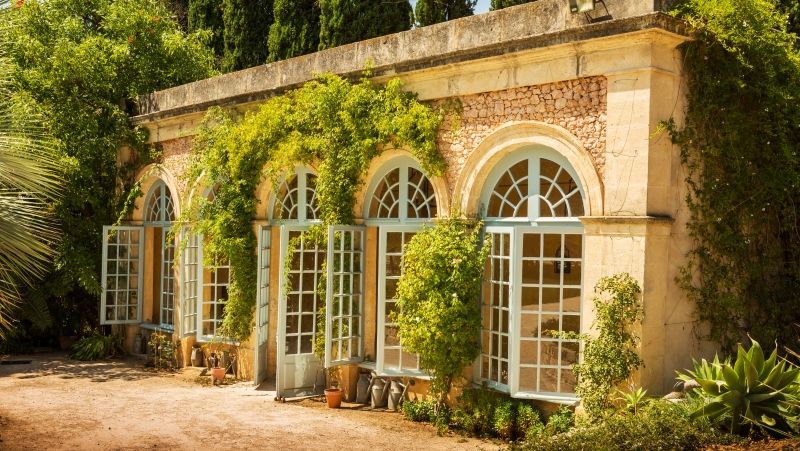
Take 5… Victorian Homes
From a mid-terraced home located between Knightsbridge and Chelsea, to a grand seven bedroom detached villa, we’ve selected five stunning Victorian homes currently on the market.


Since the message to ‘stay home and protect the NHS’ was first broadcast from Number 10, there have been countless testaments to the positive effect nature has on our mental health. As our freedoms return and we leave the home more often, here at Strutt & Parker we’ve been considering how we can bring the benefits of the great outdoors into our properties and everyday lives.
According to the latest Housing Futures survey, more than a third (36%) of homebuyers are looking for a conservatory in their new home, to benefit their wellbeing. Summer houses also scored highly, alongside gardens and orangeries, as some of the outdoor features respondents were most keen to have in their next property.
In this InSPire piece, we explore how outdoor space has evolved over time, and how in some cases, enhancing this space might add significant value to your home.
The roots of the orangery
Orangeries as we know them first came to life in Renaissance Italy. Rather than functioning as an outdoor pantry, the buildings were used to grow exotic plants –serving as a walk-in trophy cabinet to display souvenirs from far-flung trips abroad. The buildings used existing garden walls but were often separate from the home and designed to face south to maximise exposure to the sun.
By the 17th century, orangeries had grown in popularity in France, Germany and the Netherlands. Merchants from the sea-faring nations imported larger amounts of orange trees, banana plants and pomegranate shrubs, which soon lined the interiors of outbuildings in wealthy homes.
As glass became more affordable, the social elite were able to shelter exotic fruits from cold European climates, creating a warm room filled with natural light to grow their next conversation piece. It wasn’t long before orangeries became a status symbol – one of many highlights on tours of opulent properties. Gradually, they became furnished with decorative fountains and seating as they made the transition to an extension of the home.
Fast-forward to the industrial revolution and advances in technology meant that larger panes of glass could be produced more easily. Exotic fruits became more readily available and the need to grow your own oranges, lemons and other plants had waned. The extension’s main purpose became additional living space and the modern orangery was born.
The growing need for allotments
Of course, not all of us have the funds or space to have an orangery of our own. One in eight (12%) Brits had no access to a private or shared garden as of May 2020, and with a growing trend of living a more agrarian lifestyle, allotments have become more engrained in our everyday lives. But how did we get to this point of renting land away from our properties in order to grow food?
Allotments first entered the national consciousness in Elizabethan times. Small plots of land, or allotments, attached to tenant cottages were offered as part of a compensation deal, as common land became increasingly divided. By the early 18th century, the concept had given rise to ‘Guinea Gardens’ – plots of land that were made available to rent for one guinea a year, a considerable portion of a working man’s wages.
The late 19th century became a turning point, as the Allotment Act of 1887 meant that local authorities were obliged to provide allotments wherever there was demand. By the First World War, the need for space had become a national concern. A German blockade led to food shortages and nooks and crannies of land, typically beside railways, were made available for cultivating crops. However, demand had never been so high as during the Second World War. A ‘Dig for Victory’ campaign saw plot numbers reach their peak of 1.4 million, as 18% of the UK’s fruit and vegetables were grown in gardens and allotments.
The post-war years saw a sharp decline in allotments, with just 500,000 plots left in the UK by the 1970s. The dwindling numbers did slow down however, in the latter part of the decade, thanks to the popularity of TV’s The Good Life. The sitcom followed a married couple who decided to live off the land from their suburban home in Surbiton, a life choice that appeared to have inspired the whole nation.
In recent times, there has been a resurgence in growing our own food. In 2020, Hyndburn Borough Council in Lancashire reported a 300% increase in applications for allotments. The National Allotment Society revealed that 40% of English councils that responded to a survey had seen a ‘significant uplift’ in applications, despite existing 18-month waiting lists.
The concept of the urban garden
In London, the number of Brits that don’t have access to a garden or communal garden jumps to more than one in five (21%) residents. The data follows a similar pattern where size of outdoor space is concerned. Gardens in London are, on average, 26% smaller than the rest of Great Britain. With outdoor space being so scarce, innovations in gardening have had to be made.
Raised beds, window boxes and hanging baskets have helped us to maximise space for many years but a new wave of gardening innovations are ensuring that homeowners can benefit from mother nature, despite increasingly limited outdoor space.
Principles borrowed from vertical farming, or growing plants on upright surfaces, allow homeowners to add plants to their balconies and other smaller outdoor spaces. Rather than using typical natural resources, such as soil and sunlight, seeds can be grown in a nutrient-rich solution (hydroponics) or have the solution sprayed directly onto them (aeroponics), or a combination of both (aquaponics).
Community gardening has also proven popular in recent times. Projects can range from conserving an area for wildlife or adding plants to a small patch of land – the defining feature of the work is its shared nature. Whether it’s a group of volunteers or an ensemble of employees from a local business, the time spent weeding, pruning, and planting, has many benefits, including building stronger communities and providing a platform for exercise. Although activities aren’t typically carried out on private property, local schemes may be of interest to homebuyers when looking for their next property.
The value of curated outdoor space
So how much could you boost the price of your property by making improvements to outdoor and hybrid spaces? It’s difficult to say. According to estimates from 2015, average costs for outdoor space in London range between £897 and £1,925 per square foot, depending on the location. After factoring in building costs, a roof terrace or balcony typically adds 12% to the value of your property. In the capital’s most affluent neighbourhoods such as Chelsea, this rises to 25%. Access to communal gardens can also boost the price of your home, between 11% and 20% depending on your location in London. As outdoor space becomes increasingly scarce across the UK, the choice to add a roof terrace or build an orangery seems like a lucrative one.
Looking for a property with the perfect outdoor space? Find your dream home on the Strutt & Parker website, or contact one of our experienced advisors for one-to-one bespoke advice.